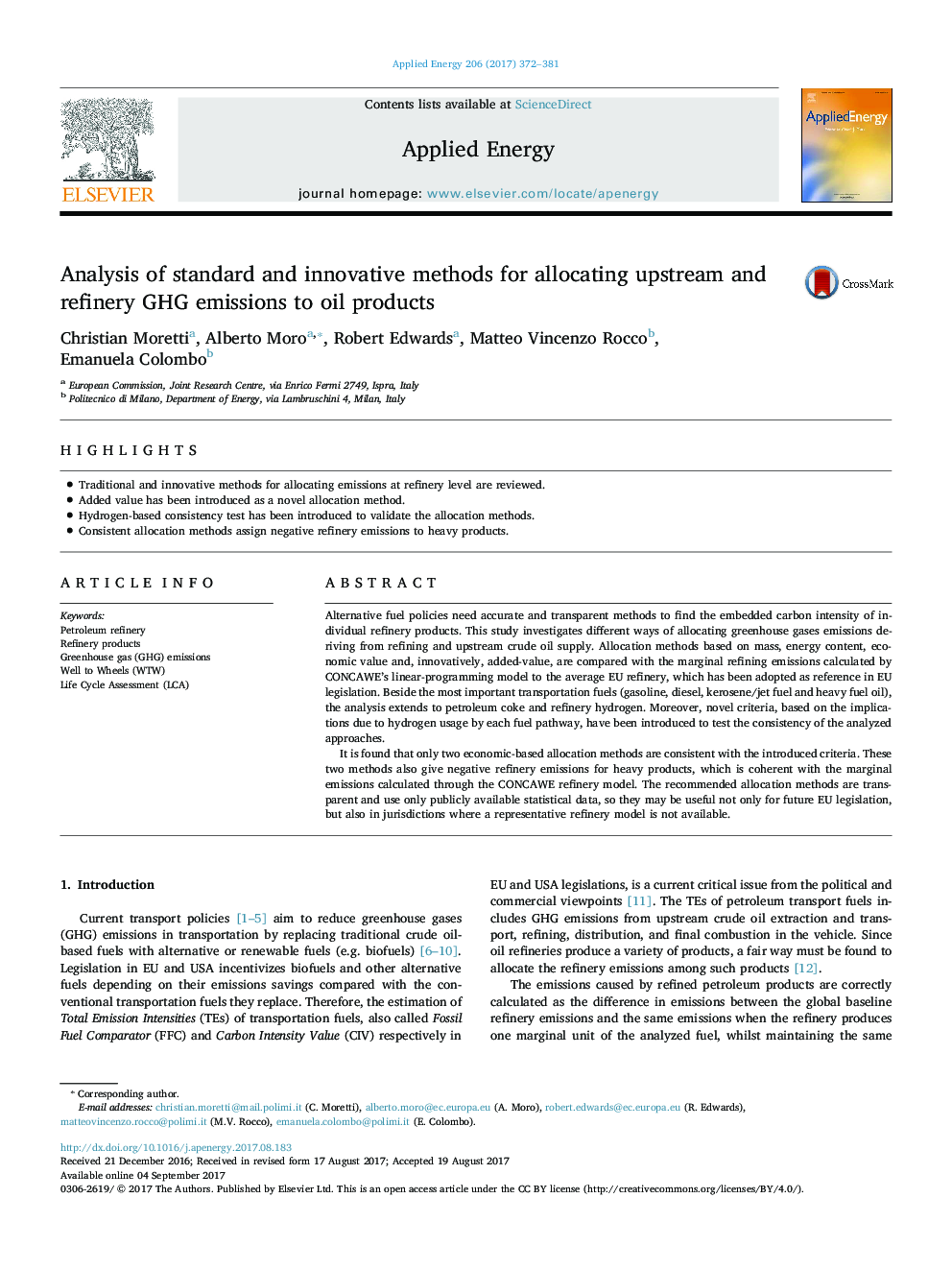| Article ID | Journal | Published Year | Pages | File Type |
|---|---|---|---|---|
| 4915684 | Applied Energy | 2017 | 10 Pages |
â¢Traditional and innovative methods for allocating emissions at refinery level are reviewed.â¢Added value has been introduced as a novel allocation method.â¢Hydrogen-based consistency test has been introduced to validate the allocation methods.â¢Consistent allocation methods assign negative refinery emissions to heavy products.
Alternative fuel policies need accurate and transparent methods to find the embedded carbon intensity of individual refinery products. This study investigates different ways of allocating greenhouse gases emissions deriving from refining and upstream crude oil supply. Allocation methods based on mass, energy content, economic value and, innovatively, added-value, are compared with the marginal refining emissions calculated by CONCAWE's linear-programming model to the average EU refinery, which has been adopted as reference in EU legislation. Beside the most important transportation fuels (gasoline, diesel, kerosene/jet fuel and heavy fuel oil), the analysis extends to petroleum coke and refinery hydrogen. Moreover, novel criteria, based on the implications due to hydrogen usage by each fuel pathway, have been introduced to test the consistency of the analyzed approaches.It is found that only two economic-based allocation methods are consistent with the introduced criteria. These two methods also give negative refinery emissions for heavy products, which is coherent with the marginal emissions calculated through the CONCAWE refinery model. The recommended allocation methods are transparent and use only publicly available statistical data, so they may be useful not only for future EU legislation, but also in jurisdictions where a representative refinery model is not available.
